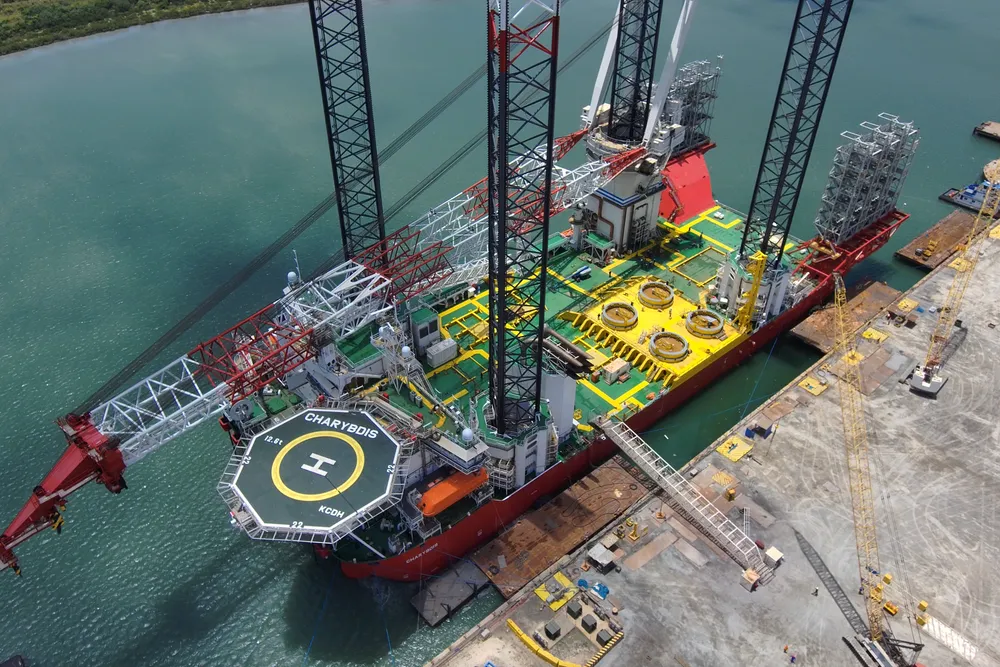US 'monster' installation vessel heads into sea-trials and service
Dominion Energy’s $715m Charybdis is expected to enter service as the nation’s only US-flagged WTIV

Dominion Energy’s $715m, 426-foot (139-meter) Charybdis will start sea trials this week and is expected to enter service shortly after as the only US-flagged wind turbine installation vessel (WTIV).
We are “confidently in the position to conclude commissioning next week and begin sea trials immediately thereafter,” Dominion CEO Bob Blue said during the utility’s second quarter earnings call last Friday.
“Upon successful completion of sea trials, the vessel will officially enter service and commence the charter with CVOW [Coastal Virginia Offshore Wind],” Blue said.
Constructed by global shipbuilder Seatrium at its Brownsville, Texas shipyard where Charybdis is undergoing trials, it will then take about 10 days to travel to Virginia.
“We will install our first turbine in September, which is in line with our original schedule,” Blue confirmed.
Charybdis’ entry into installation will culminate the nation’s most ambitious offshore wind shipbuilding effort that was an early win for supply chain building.
The Jones Act forbids foreign-flagged vessels from calling in at consecutive US ports or points on the outer continental shelf, effectively mandating US-flagged vessels in most of the offshore wind fleet.
The industry sparked a boom in demand for smaller crew transfer vessels (CTV) as well as three massive service operations vessels (SOV) that regularly transit between turbines and port.
The industry had a workaround for its costliest and most vital asset – the WTIV.
Feeder barge
Instead of building such a complicated and expensive ship in the US where costs and time requirement are much higher than global peers, the industry had settled on a system of US-flagged tugs and barges to deliver the massive components to the foreign-flagged WTIV.
This feeder barge system is widely seen to add costs, complexity, and risk to project installation, however.
This may be reflected in US pioneer Vineyard Wind's struggles to complete installation. Iberdrola-CIP's project is using feeder barges and has faced multiple delays, mostly related to a collapsed blade and the need to replace many others.
After more than two years, has only completed 24 of a total 64 turbines.
Blue said the “de-risking associated with this kind of installation” is what gives Dominion confidence in completing the project on time at the end of 2026.
“It really has made such an extraordinary difference in monopile installation to not have to pick up monopiles onto a barge and then pick them up off the barge onto the installation vessel,” Blue said.
Belgian marine contractor Deme was able to bring its Orion heavy lift vessel to port despite the Jones Act by postponing dumping scour protection until after foundations were driven.
According to the Coast Guard, the turbine only becomes a US OCS point after the foundation is pounded or scour laid.
“We're in a very strong position to get installation on schedule and remain on a track,” he said.
(Copyright)